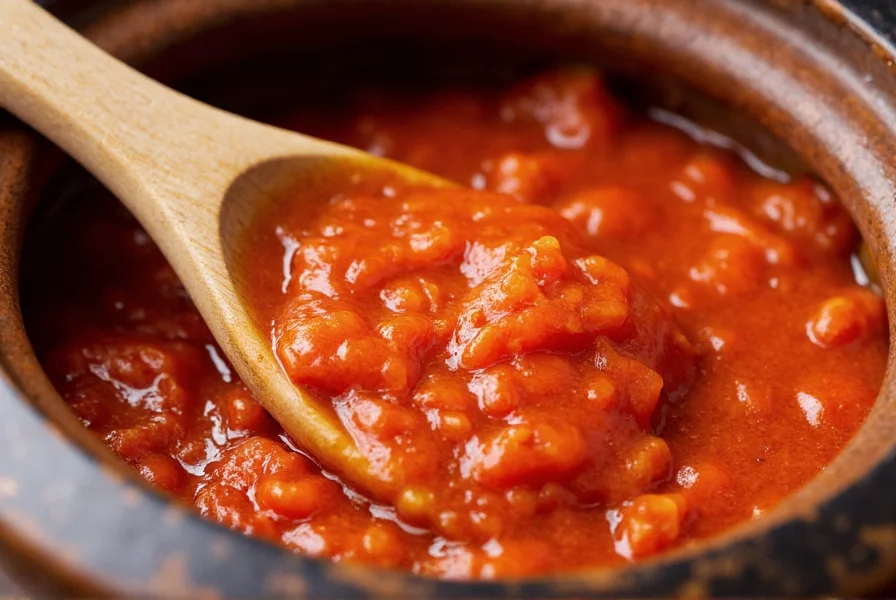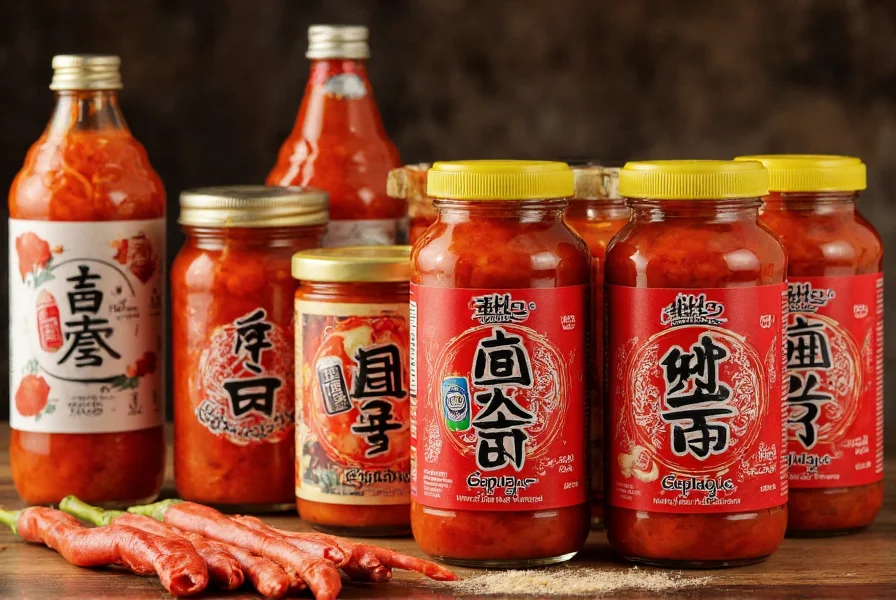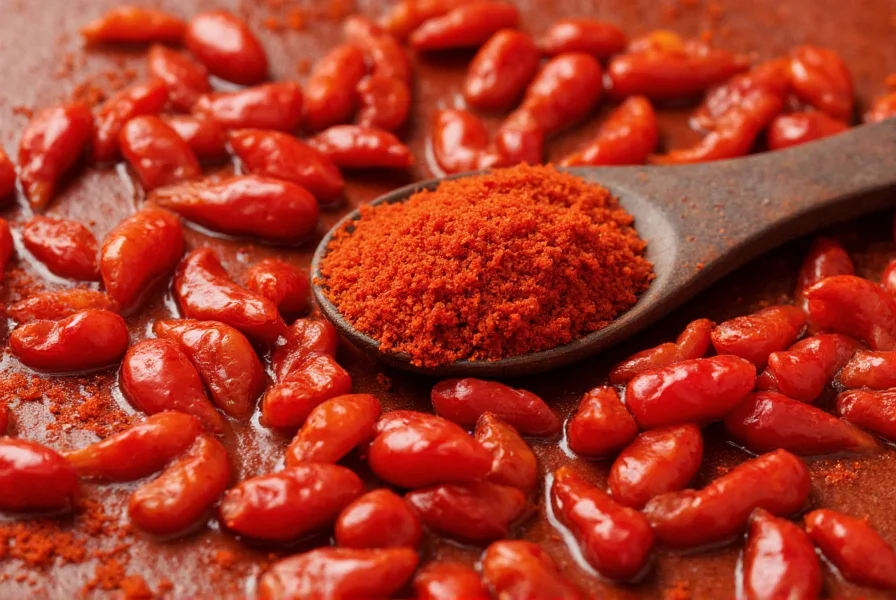Understanding this vibrant red paste is crucial for anyone exploring authentic Korean cuisine. Gochujang isn't just another hot sauce—it's a carefully crafted fermented product with centuries of culinary tradition behind it. Unlike Western hot sauces that focus primarily on heat, gochujang offers a sophisticated balance of flavors that enhances rather than overwhelms dishes.
What Makes Gochujang Unique Among Chili Pastes
Gochujang stands apart from other red chili condiments through its distinctive fermentation process and ingredient composition. While sriracha relies on vinegar for tanginess and Tabasco uses distilled vinegar andscrição peppers, authentic gochujang undergoes a months-long fermentation that develops its characteristic deep umami flavor. The inclusion of mejugaru ( Korean red pepper powder), ssalteok (glutinous rice), and meju (fermented soybean blocks) creates a complex flavor profile impossible to replicate with quick-mixed sauces.

Traditional Ingredients and Production Process
The authentic preparation of gochujang follows a precise methodology that has remained largely unchanged for generations. Traditional producers begin with sun-dried Korean red peppers (gochugaru), which are ground into a fine powder. This powder combines with steamed glutinous rice and meju powder (fermented soybean cakes), then mixes with brine to begin fermentation.
The mixture then rests in onggi (traditional Korean earthenware pots) in nurubang (fermentation rooms) where temperature and humidity are carefully controlled. This slow fermentation process, typically lasting 6-12 months, allows natural enzymes to break down starches into sugars and develop the paste's signature complex flavor profile.
| Ingredient | Traditional Percentage | Function |
|---|---|---|
| Gochugaru (red pepper powder) | 30-40% | Provides heat and color |
| Glutinous rice | 25-35% | Source of fermentable sugars |
| Meju powder (fermented soybeans) | 15-25% | Contributes umami and depth |
| Salt | 10-15% | Preservative and fermentation regulator |
Nutritional Profile and Health Considerations
Gochujang offers more than just flavor—it contains several beneficial compounds resulting from its fermentation process. A tablespoon (15g) typically contains:
- 30-40 calories
- 6-8g carbohydrates
- 1-2g protein
- Trace amounts of vitamins A and C
- Naturally occurring probiotics from fermentation
The capsaicin in gochujang may provide metabolic benefits, while the fermentation process creates beneficial enzymes. However, commercial varieties often contain added sugar, so those monitoring sugar intake should check labels carefully when buying korean red chili paste.
Essential Culinary Applications
Gochujang serves as the flavor foundation for numerous Korean dishes. Professional chefs and home cooks alike use it in these fundamental applications:
- Marinades: Combined with garlic, sesame oil, and pear juice for bulgogi (Korean barbecue)
- Stews: The essential base for budae jjigae (army stew) and sundubu jjigae (soft tofu stew)
- Dipping sauces: Mixed with vinegar, honey, and sesame seeds for mandu (dumplings)
- Stir-fries: Creates the signature sauce for tteokbokki (chewy rice cakes)
- Salad dressings: Blended with olive oil and rice vinegar for modern fusion applications
When using gochujang in cooking, remember that its flavor deepens when heated. For best results, bloom the paste in a small amount of oil before adding other ingredients to maximize flavor development.
Selecting and Storing Authentic Gochujang
Finding quality gochujang requires attention to ingredient lists and packaging. Look for products listing only gochugaru, glutinous rice, fermented soybeans, and salt—avoid those with artificial preservatives, excessive sugar, or corn syrup. Traditional Korean brands often indicate "fermented for X months" on the label, which signals authentic production.
Proper storage maintains gochujang's quality and extends its shelf life. After opening, keep it refrigerated in an airtight container. The high salt content naturally preserves it, allowing it to remain safe for consumption for 1-2 years. If you notice mold or an off smell, discard the product immediately—though this rarely occurs with properly stored paste.

Effective Substitutes When Gochujang Is Unavailable
Finding the perfect gochujang substitute can be challenging due to its unique flavor profile, but these alternatives work in a pinch:
- DIY blend: Mix 1 tbsp red pepper flakes, 1 tbsp soy sauce, 1 tsp sugar, 1 tsp tomato paste, and 1 tsp vinegar
- Doubanjiang: Chinese fermented broad bean paste (use sparingly as it's saltier)
- Thai chili paste with added miso paste for umami depth
- Harissa with a touch of honey and soy sauce
Remember that no substitute perfectly replicates authentic gochujang's complex fermented flavor, but these options can provide similar heat and depth in recipes calling for korean red pepper paste.
Understanding Commercial Variations
Modern manufacturers produce several variations of gochujang to suit different culinary needs:
- Regular gochujang: Standard thickness and heat level
- Sweetened gochujang: Contains additional sugar for milder applications
- Light gochujang: Reduced salt version for health-conscious consumers
- Fresh gochujang: Unfermented version with brighter, sharper flavor
- Organic gochujang: Made with certified organic ingredients
When selecting a product, consider your intended use. Traditional recipes typically require standard gochujang, while modern fusion dishes might benefit from sweetened or light varieties. Reading labels carefully helps identify the best option for your specific korean chili paste recipe requirements.
Frequently Asked Questions
What's the difference between gochujang and gochugaru?
Gochujang is a thick, fermented red chili paste made from gochugaru (Korean red pepper powder), glutinous rice, fermented soybeans, and salt. Gochugaru is simply the dried, ground red pepper flakes used as an ingredient in gochujang and many other Korean dishes. Gochujang has a complex sweet-spicy-umami flavor from fermentation, while gochugaru provides pure chili heat.
Is gochujang gluten-free?
Authentic traditional gochujang is naturally gluten-free as it uses glutinous rice (which is gluten-free despite its name) rather than wheat. However, some commercial brands may add wheat flour as a thickener or use shared equipment with gluten-containing products. Always check the label for gluten-free certification if you have celiac disease or gluten sensitivity.
How spicy is gochujang compared to other hot sauces?
Gochujang typically ranges from 1,500 to 10,000 Scoville units, making it milder than many Western hot sauces. For comparison, sriracha ranges from 1,000-2,200 Scoville units while Tabasco ranges from 2,500-5,000. The perceived heat of gochujang is moderated by its sweetness and fermentation, creating a more complex flavor experience than单纯的 heat.
Can I make gochujang at home?
Yes, but authentic homemade gochujang requires significant time and specific ingredients. The traditional process involves fermenting a mixture of gochugaru, steamed glutinous rice, meju powder (fermented soybean cakes), and salt for 6-12 months in controlled conditions. While simplified versions exist using miso paste as a fermentation starter, they won't replicate the complex flavor of traditionally made gochujang.
Does gochujang need to be refrigerated?
Unopened gochujang can be stored in a cool, dark pantry, but once opened, it should be refrigerated to maintain quality and prevent spoilage. The high salt content acts as a natural preservative, allowing refrigerated gochujang to remain safe for 1-2 years. Always use clean utensils when handling to prevent contamination.











 浙公网安备
33010002000092号
浙公网安备
33010002000092号 浙B2-20120091-4
浙B2-20120091-4